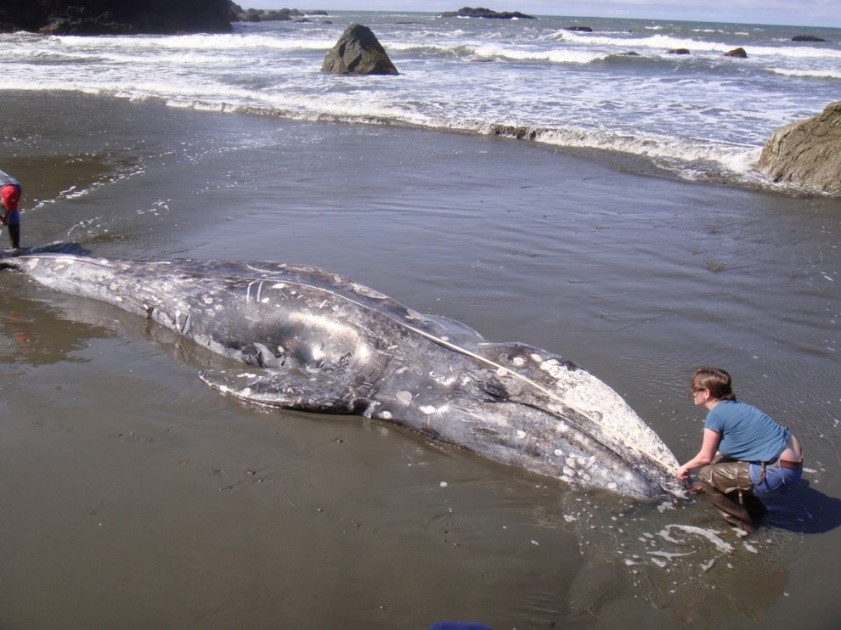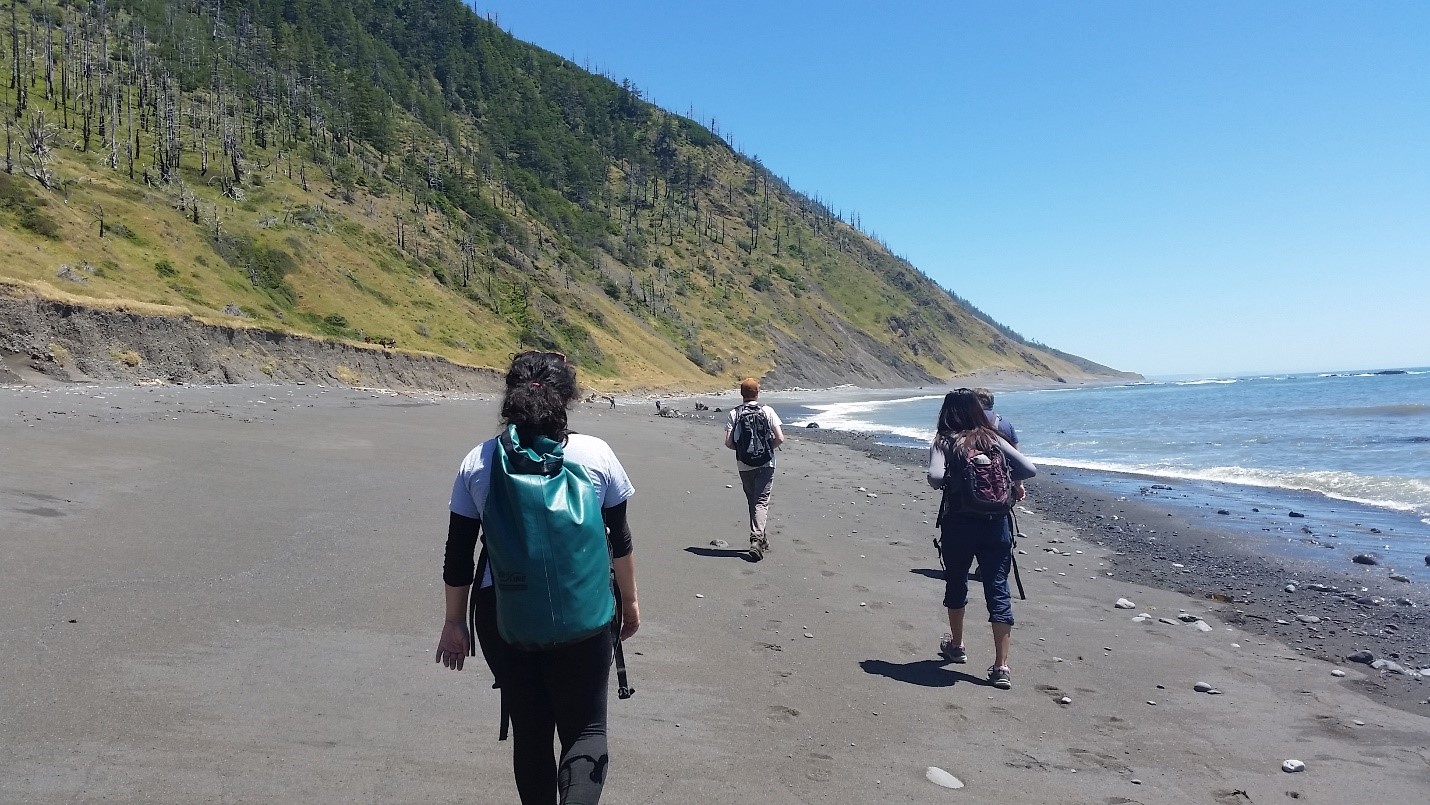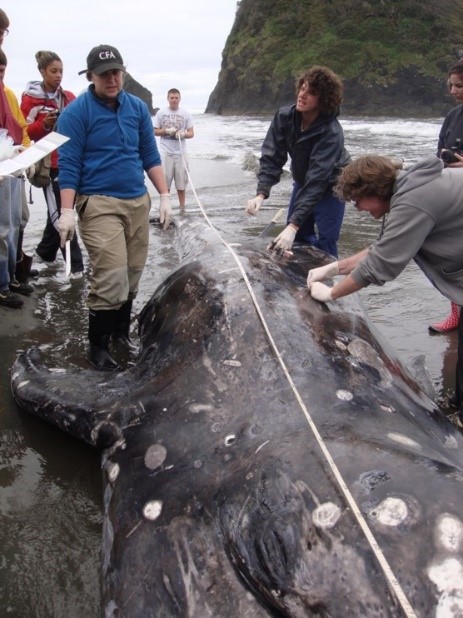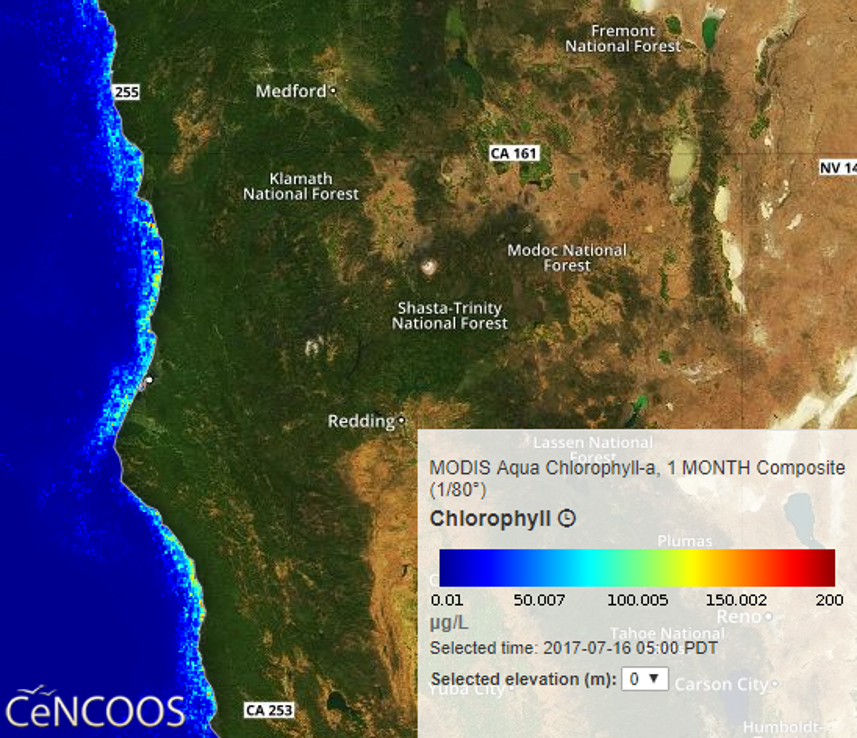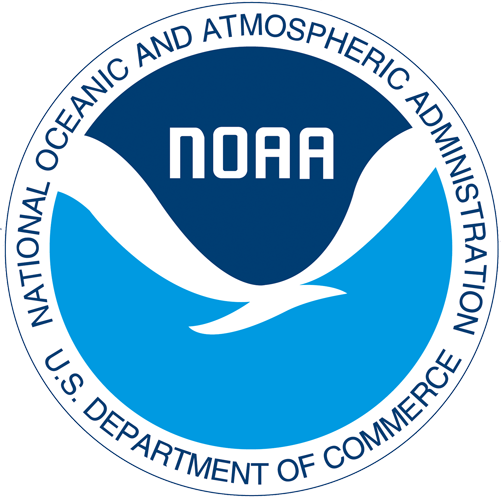Depending on the species, the state of the carcass and other variables, we may collect samples for DNA analysis, contaminant analysis, and disease assessment or may conduct a full necropsy to determine cause of death.
Common causes for strandings include pathogens, human interactions and natural causes such as El Ninos and Demoic Acid. Depending on the species and condition, we may also collect samples for the HSU Vertebrate Museum to serve as an archive
for student learning and to share with researchers in our region, and with our national and international collaborators. During our stranding responses, we work closely with our
partners and the regional stranding coordinators from the West Coast Region to coordinate our activities with those throughout the West Coast Region. Each stranding has the potential to help us learn not only about the cause of death of
this one individual, but about the biology of the species, the health of the population of the health of the ocean habitat.
